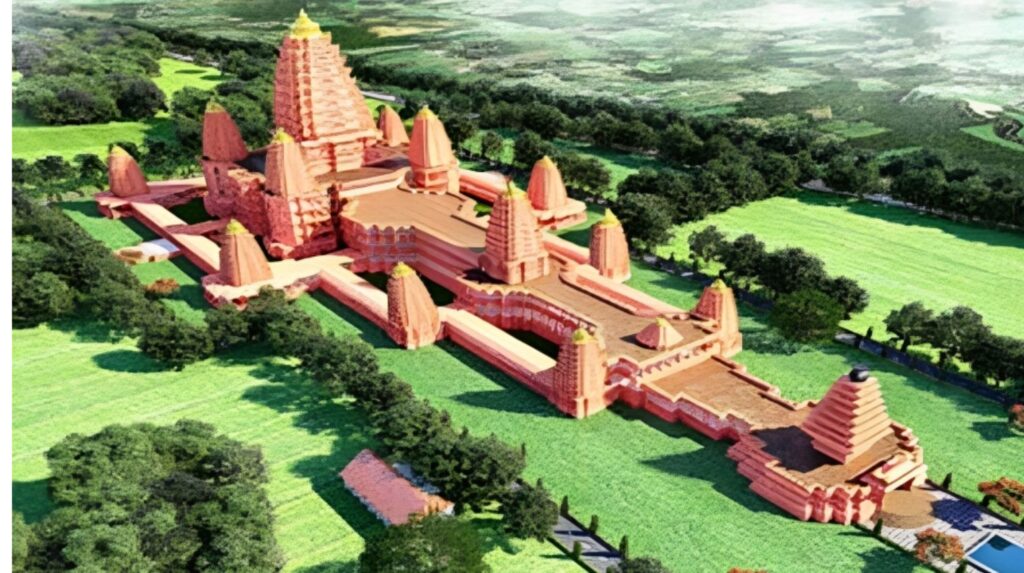The Ram temple trust emphasized that the majority of the Ram temple compound will consist of a lush green area adorned with numerous trees. Additionally, the complex itself will be self-reliant, as stated by the trust. Notable features of the complex include its own sewage and water treatment plants, a fire brigade post, and a dedicated power line. According to Champat Rai, the general secretary of the Ram temple trust, approximately 70% of the 70-acre complex will be dedicated to this green area. During a press conference, Rai further explained that the green area encompasses dense portions where sunlight barely penetrates. Furthermore, the trust has taken measures to preserve around 600 existing trees within the green belt. Rai also highlighted that the temple complex will be self-reliant in terms of its sewage and drainage system, ensuring that it does not burden the Ayodhya municipal body.
The sewage treatment plants (STPs), water treatment plant (WTP), and dedicated electricity line from the power house will be included in the complex. Additionally, there will be a fire brigade post that can access water from an underground reservoir, according to the statement. The first phase of the temple is almost finished, and Prime Minister Narendra Modi will participate in the consecration ceremony of the Ram Lalla idol on January 22. Uttar Pradesh Deputy Chief Minister Keshav Prasad Maurya recently visited the office of the Shri Ram Janmabhoomi Teerth Kshetra in Ayodhya. Furthermore, Modi is scheduled to visit the temple town on December 30 to inaugurate the renovated Ayodhya railway station and a new airport. He will also deliver a speech during a rally. Maurya expressed that preparations for Modi’s visit are in full swing. A panoramic image of the temple’s future appearance is showcased in the trust’s office lobby. After a presentation of the Ram Mandir landscape plan, Rai guided journalists to the temple construction site.
According to Rai, the entrance to the temple will be located on the eastern side, while the exit will be on the southern side. To reach the main temple, visitors will need to climb 32 steps from the eastern side.
Rai further explained that the temple complex will be built in the traditional Nagara style and will have a length of 380 feet in the east-west direction, a width of 250 feet, and a height of 161 feet.
The temple will consist of three storeys, with each floor being 20 feet high. It will be supported by a total of 392 pillars and will have 44 gates.
Additionally, the temple will feature a rectangular periphery called ‘percota’, which is a characteristic found in South Indian temples but not commonly seen in the north. The ‘percota’ will be 14 feet wide and will span a distance of 732 meters.
Rai also mentioned that the four corners of the ‘percota’ will be dedicated to the Sun God, Maa Bhagwati, Lord Ganesha, and Lord Shiva.
Furthermore, the temple complex will include shrines dedicated to Maa Annapurna on the northern side and Lord Hanuman on the southern side.
In addition to these, there are plans to construct seven other shrines in the complex, which will be dedicated to Maharshi Valmiki, Maharshi Vashisht, Maharshi Vishwamitra, Maharshi Agastya, Nishad Raj, Mata Shabri, and Devi Ahilya, all of whom are associated with Lord Ram’s life.

Lastly, an idol of Jatayu has already been installed at Ayodhya’s Kuber Tila, and an ancient Shiva temple existing on Kuber Tila has been revitalized.
During a visit to the construction site on Tuesday, PTI observed that laborers were diligently working on chiseling stone slabs and giving finishing touches in preparation for the consecration ceremony.
According to Rai, the auspicious time for the consecration would fall between noon and 12.15 pm.
On Tuesday, a significant number of individuals visited the Ram Janmabhoomi site to catch a glimpse of the deity – the old idol of Ram Lalla that is currently housed in a temporary shrine – as construction work continued nearby.
The complex will also feature a lift and two ramps at the entrance to accommodate the elderly and individuals with disabilities.
Additionally, there will be a pilgrim facilitation complex equipped with a healthcare center and a toilet block. Prior to their visit, 25,000 people will have the opportunity to deposit their shoes, watches, and mobile phones.
Furthermore, a pathway has been constructed to address emergency situations.
Rai further mentioned that a statue of Jatayu has been erected at Kuber Tila in Ayodhya, and an ancient Shiva temple that already existed there has been revitalized.
In 2019, the Supreme Court delivered a historic verdict, settling a century-old dispute between the temple and mosque.
The court supported the construction of the Ram temple at the disputed site and mandated the allocation of an alternative five-acre plot for the construction of a mosque.

